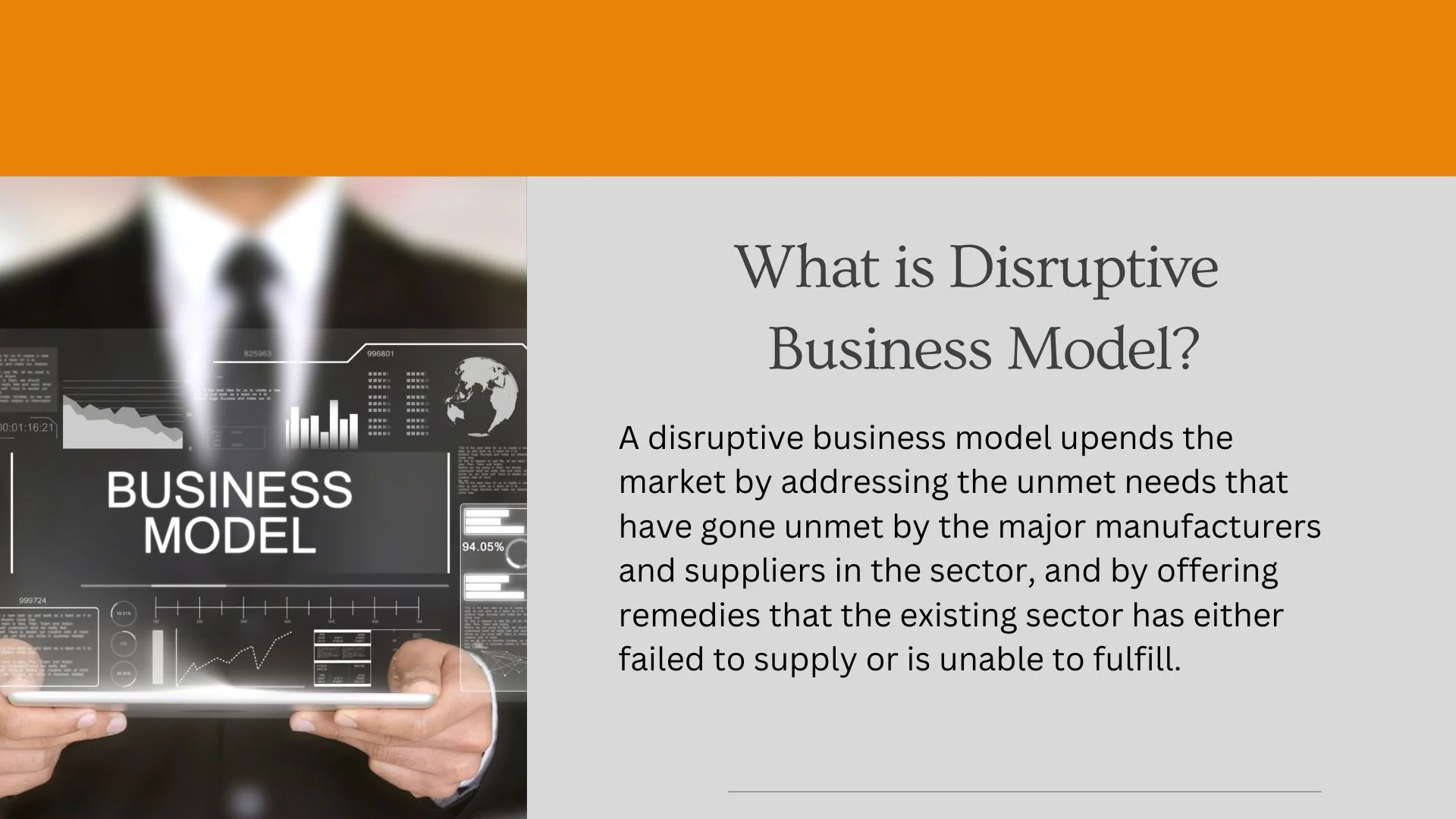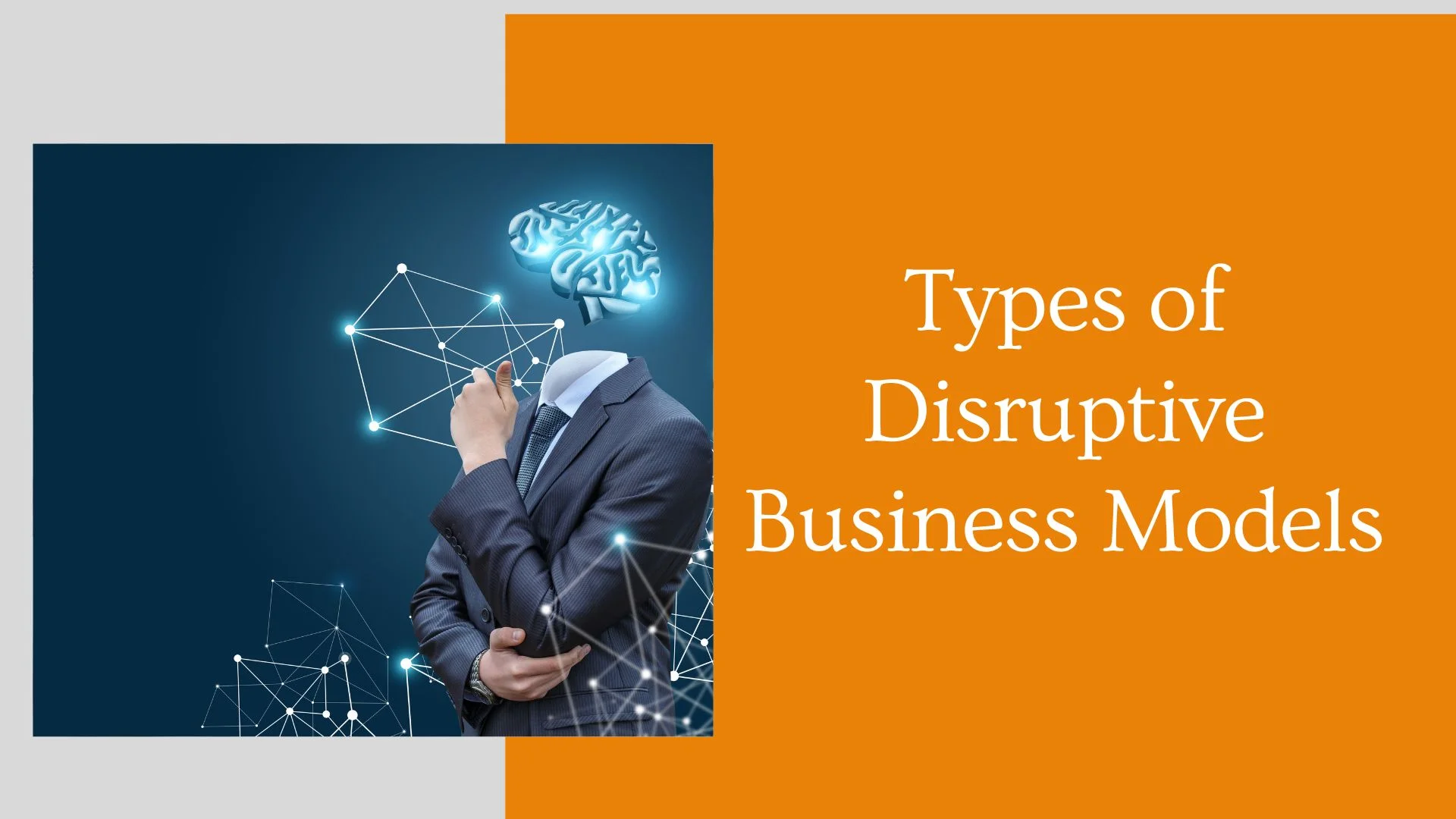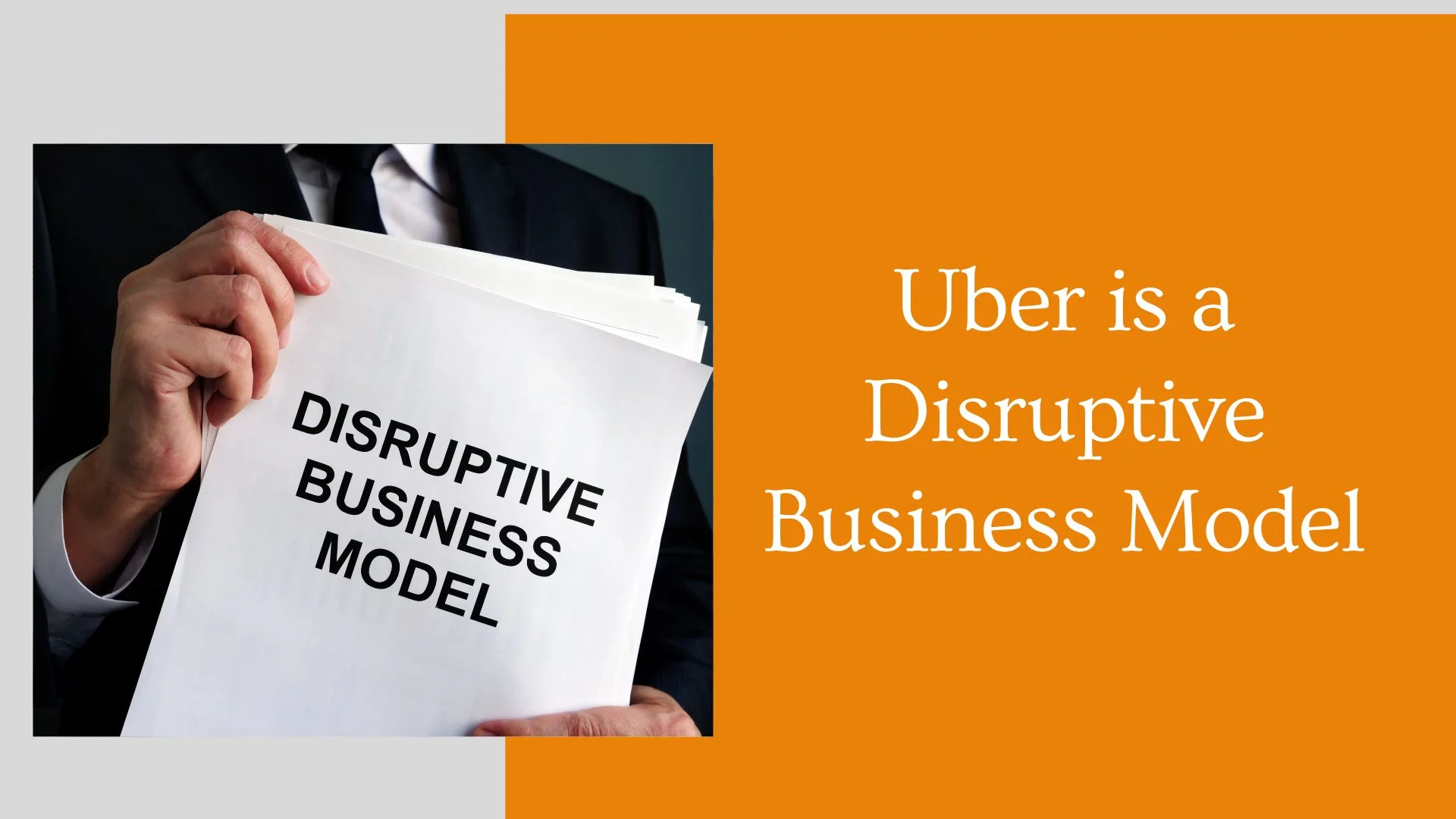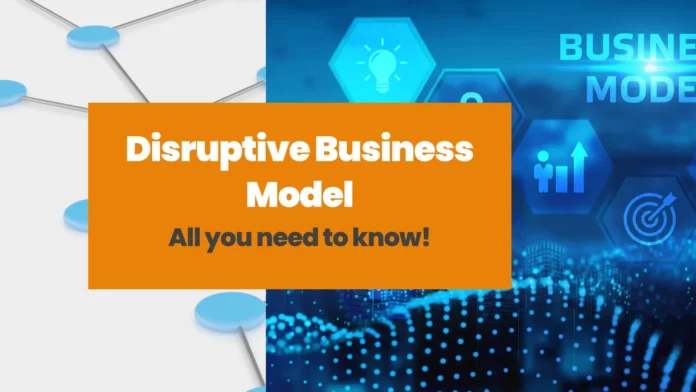Introduction
Disruptive Business Model assimilated into a sizable portion of society’s way of life. We now book an Uber instead of calling a cab. By grouping cab drivers under one brand and offering standardized services at set pricing, Uber was able to resolve many transportation issues.
Uber’s Disruptive Business Model revolutionized the transportation industry by leveraging technology, on-demand convenience, and a peer-to-peer platform, changing how people book and experience rides.
What is Disruptive Business Model?

A Disruptive Business Model upends the market by addressing the unmet needs that have gone unmet by the major manufacturers and suppliers in the sector, and by offering remedies that the existing sector has either failed to supply or is unable to fulfill.
These business strategies are based on disruptive innovation, which enables them to create new markets or niches within current markets by creating, cutting out intermediaries, simplifying, reengineering, or optimizing a product or service.
Types of Disruptive Business Models

Here, we’ll focus on just the top nine Disruptive Business Models that have produced the most significant market advances. We’ll quickly discuss each strategy’s benefits as well as the organizations that best represent it.
Freemium Model
This is the most popular Disruptive Business Model. The consumer is given something or service without paying for it. Only the most basic features are provided, or the user must pay for premium features without branding or service expansion. In this approach, you may expand your consumer base rapidly, enter new markets, and make money by turning visitors into paying clients.
Typical examples: Spotify, Linkedin, Xing, and Canva.com.
Subscription Model
Typically, subscriptions to goods and services are also an example of a Disruptive Business Model. A sum that would typically only happen once is divided, or a new service is made that is billed on a regular basis. Long-term consumer commitment is the goal. The consumer gains from service enhancements and extensions as opposed to a one-time purchase.
Here, you may also turn non-divisible goods into subscriptions.
Typical examples: Amazon, Netflix, Internet Provider
Marketplace Model
Markets already had or still, have a lot of potential to disrupt several businesses. The business concept here often involves a digital marketplace that links the vendor and the customer on a single platform. Brokerage fees, commissions, or fixed transaction charges are often sources of income.
However, it is also feasible to make money via the platform’s membership fees or by selling advertising space or premium placement services.
Typical examples: Amazon, Alibaba, Uber, eBay
User Experience Premium
This is a high-end Disruptive Business Model that is simple to see using Apple. An exchangeable product gains value through a positive client experience. Improvements are made to the brand, service, and customer experience in particular, and premium pricing is paid.
Typical examples: Tesla, Apple, and Premium Brands.
Pyramid Model
The sales Disruptive Business Model is a standard one that has been around for a while. These pyramid models may be swiftly constructed and readily managed, especially given the simple billing provided by technological assistance. Particularly attractive are items with large margins and simple explanations.
Typical examples: Amazon Affiliate, Microsoft, Dropbox
On-demand Model
The foundation of this Disruptive Business Model is the idea that time equals money. The premium access to “time” as well as the quick access are both marketed. You can request the delivery, the item, or the service at a specific time. Examples of effective systems include video-on-demand, taxi (over) on-demand, and several others. Companies or people with products or time offer their services to those with money but without commodities or time.
Typical examples: Amazon Prime, Uber, Upwork, Cloud Services
Free Offerings
a paradigm that has become more well-known, particularly thanks to Google. This is arguably the most puzzling Disruptive Business Model for many entrepreneurs, yet it has a lot of promise for particular businesses. It is interesting to employ a lot of customer data since such disruptive business models often assess consumer data for advertising or personalized offerings.
When simply a free service is being considered, you must also prepare for a protracted ramp-up period.
Typical examples: Google, Facebook
Sharing Economy – Access-over-Ownership Model – Renting & Leasing
The classical definition of “letting” is used to characterize the sharing economy. Usually, you can only purchase something or grant someone temporary access to your services. The practice of automobile sharing is one example. For a set number of hours and km, the automobile is made available to a third party for a fee. This generally holds true for all goods, including tangible and intangible goods, those produced by private persons and businesses alike.
Typical examples: Airbnb, Sharoo, Mobility, Lyft
Ecosystem – Create your own ecosystem
Every entrepreneur’s aim is to permanently tie clients to an ecosystem through a “lock-in” procedure in a service. You presumably belong to this ecosystem, for instance, if you use an Apple or Android smartphone. You purchase the necessary hardware and utilize applications that might only work with that system. Due to this, the transformation is challenging and new competitors cannot flourish.
Typical examples: Apple, Google
Check out our Course in Investment Banking
How Uber is an example of a Disruptive Business Model

Due to the major changes, it has made to the conventional taxi and transportation industries, Uber is frequently used as an illustration of a Disruptive Business Model.
Here’s how Uber managed to cause upheaval:
- Technology-driven innovation:
Uber used technology to build a platform that links customers and drivers directly through a smartphone app. Uber provided a more convenient and effective way to hail a vehicle by doing away with the requirement for conventional taxi dispatch systems and by offering real-time information.
- Disintermediation:
By eliminating intermediaries like taxi firms or dispatchers from the equation, Uber upended the conventional taxi market. Drivers and passengers could communicate directly as a result, which increased openness and decreased expenses.
- Peer-to-peer sharing economy:
Uber created a peer-to-peer Disruptive Business Model that allowed users to provide trips for money using their own automobiles. By utilizing the sharing economy, this creative strategy gave drivers new financial options and a more flexible employment alternative.
- Dynamic pricing and convenience:
Uber introduced surge pricing, a kind of dynamic pricing that alters prices in response to supply and demand. This price structure encourages more drivers to be available during rush hours and provides convenience to customers ready to pay extra for quick transportation.
- Enhanced user experience:
Users may track their journeys, estimate rates, and make cashless payments using the user-friendly and frictionless Uber smartphone app. This emphasis on convenience and the client experience helped Uber stand apart from conventional cabs.
- Market expansion and globalization:
Uber quickly spread throughout the world’s cities, upsetting established taxi monopolies and municipal transportation laws. Uber was able to create a global footprint and challenge existing transportation sectors because of its aggressive expansion approach.
It’s crucial to remember, too, that legislative obstacles and criticism have also confronted Uber’s innovative business model. A number of problems, including labor rights, driver pay, safety standards, and the effect on conventional taxi operations, have been brought up for discussion. In spite of this, Uber’s influence on the transportation sector is usually regarded as a prime example of disruptive innovation.
Check out our Investment Banking Program
Conclusion
By grouping cab drivers under one brand and offering standardized services at set pricing, Uber was able to resolve this issue. With only a few taps on a smartphone, the firm made it simple to order and monitor a cab.
It has already linked 2 million drivers globally and amassed 100 million customers worldwide.
Before Uber, calling a taxi required calling a distinct number in each state, which was no easy chore for passengers. Additionally, most nations didn’t standardize their pricing.
Check out our The Best PG Program In Financial Modelling with Placement Guarantee
Frequently Asked Questions
The Netflix business model is a fantastic illustration of disruptive innovation. In 1997, Netflix launched its monthly DVD membership service. Customers of Netflix may rent an unlimited number of DVDs for only $8.99 per month.
The process by which a smaller company—typically one with fewer resources—moves upwards and competes with more established, larger companies is known as disruption. Higher profit margins drive incumbent enterprises to avoid competing with new entrants for market share in both low-end and new-market disruption.
Its success in innovation stems from reinvention and improvement, which provide disruptive power. Ironically, Apple I, Steve Jobs’ initial creation, did not experience his innovative spark.
The solution lies in how it has mastered ideation, incubation, and scaling to fully use its already-existing assets and competencies and to use them to leverage into new enterprises. Three key ideals that Jeff Bezos believes in and that permeate Amazon’s organization and culture form the foundation of its innovation process.
To disrupt an industry is to satisfy customer needs with a business strategy that unseats the market leaders and generates an almost unfair competitive advantage. The online music provider Spotify satisfies these requirements.





